
National Election 2015
Tanzania’s 2015 general elections were some of the closest since the country’s transition to multiparty democracy in 1992.
In the period before the elections, a broad cohort of civil society organizations organized election observations to monitor the election processes. The Tanzania Women Cross-Party Platform (TWCP) was one such organization, which conducted a thematic observation focused on women’s participation in the election and monitored incidents of violence against women as voters, candidates and election officials.
This observation was specifically focused on violence against women in elections, and gathered detailed information about incidents of violence, including the type of violence used, victims and perpetrators. TWCP designed their checklists carefully to reflect what would reasonably be observable during their data collection period.
For several years, women’s rights activists, academics and experts in Tanzania have been raising awareness and working to end “sextortion,” a term that was coined to describe a certain form of VAW-E that women candidates began to report, in which women who seek election or nomination face the extortion of sexual favors within their own political parties by party leaders. TWCP itself has contributed to raising awareness about the phenomenon in the past. However, although it considered “sextortion” an important form of VAW-E—one that was likely to occur—it was not included on the final observation forms because it would be happening before the period of time during which observers would be collecting data.
BEFORE THE ELECTION
TWCP stationed 44 observers throughout the country to gather reports on violence against women directly before the day of elections. These observers also reported incidents of violence they witnessed or received information on from credible third parties on election day itself.
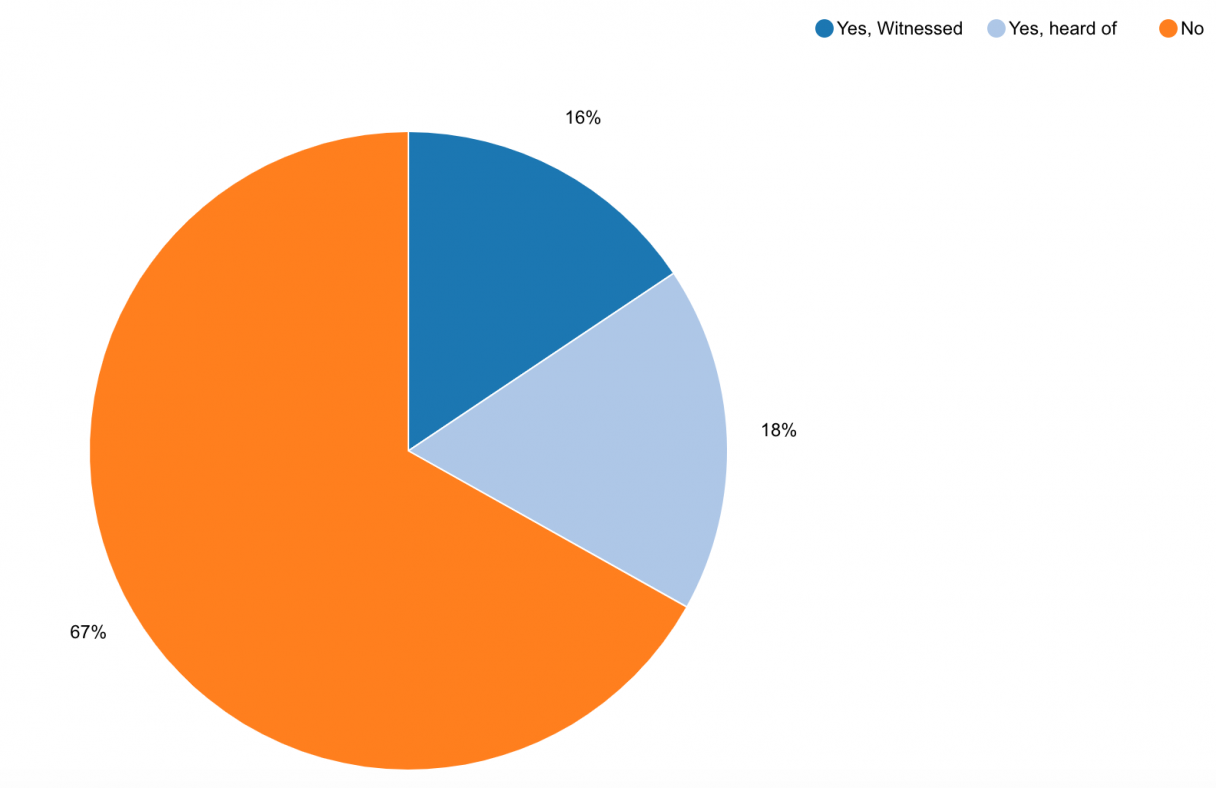
Have you witnessed or heard of any attacks on women at any rallies?
16% of observers reported that they witnessed attacks on women at rallies, while 18% reported that they had heard of such attacks. 67% reported that they had received no reports of violence targeting women at rallies.
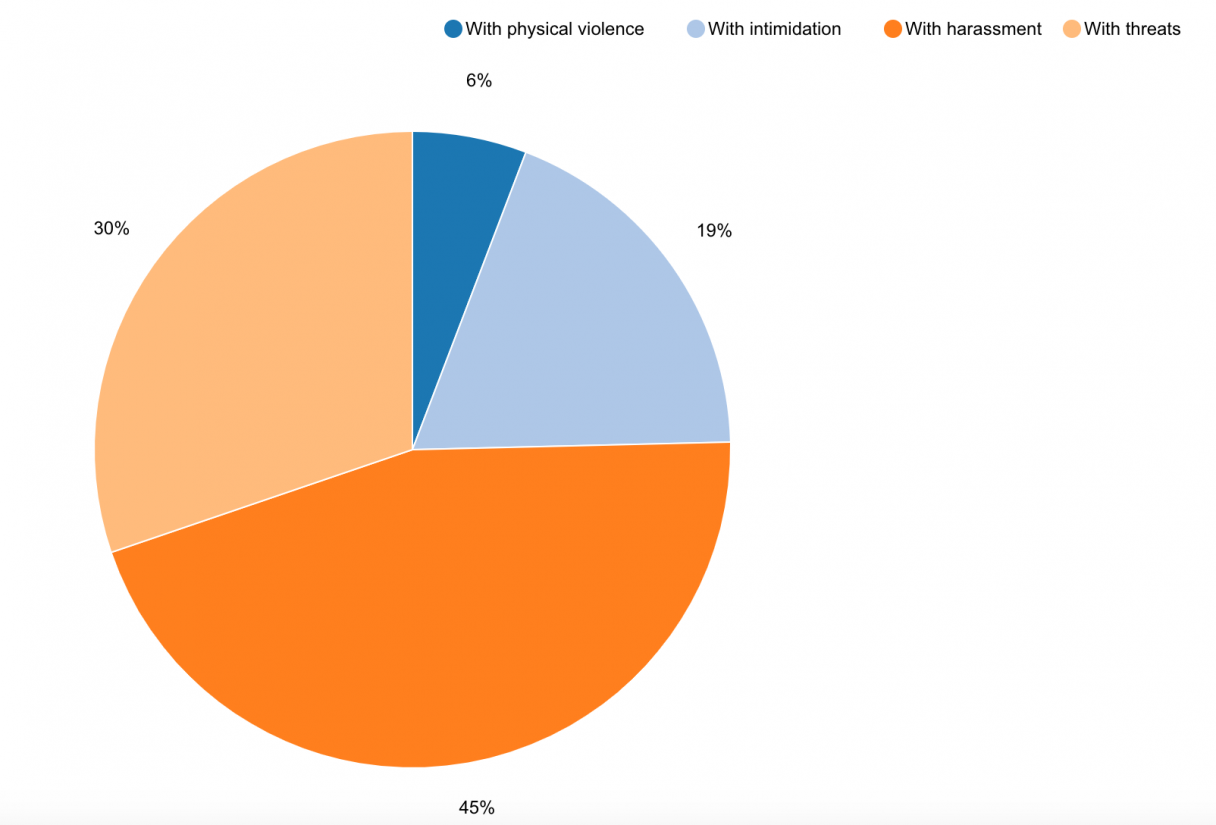
How were women at rallies attacked?
Of the violence at rallies reported by observers, incidents were overwhelmingly forms of psychological violence. 45% of reported incidents were harassment, and 30% were intimidation.
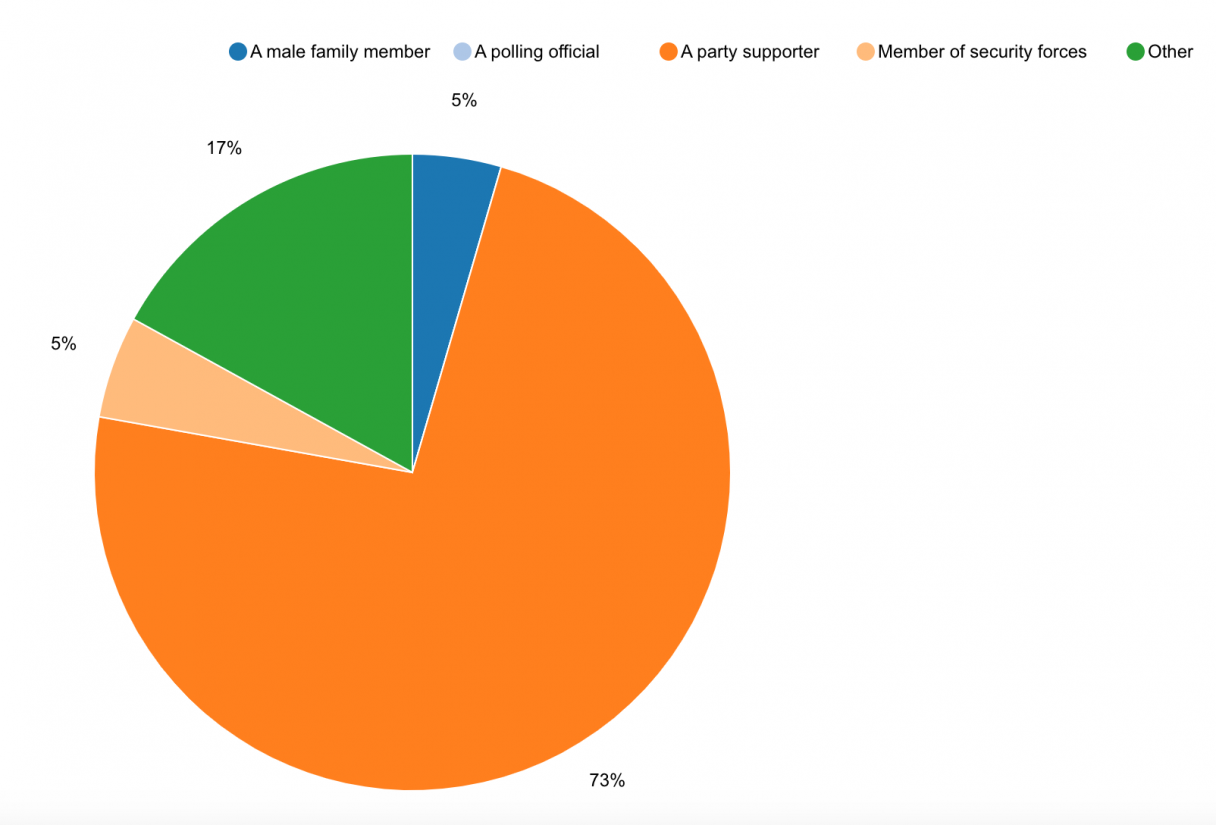
Who were the perpetrators of violence at rallies?
Of the incidents of violence at rallies that were reported, observers recorded that perpetrators were most frequently party supporters -- supporters were 73% of the reported perpetrators.
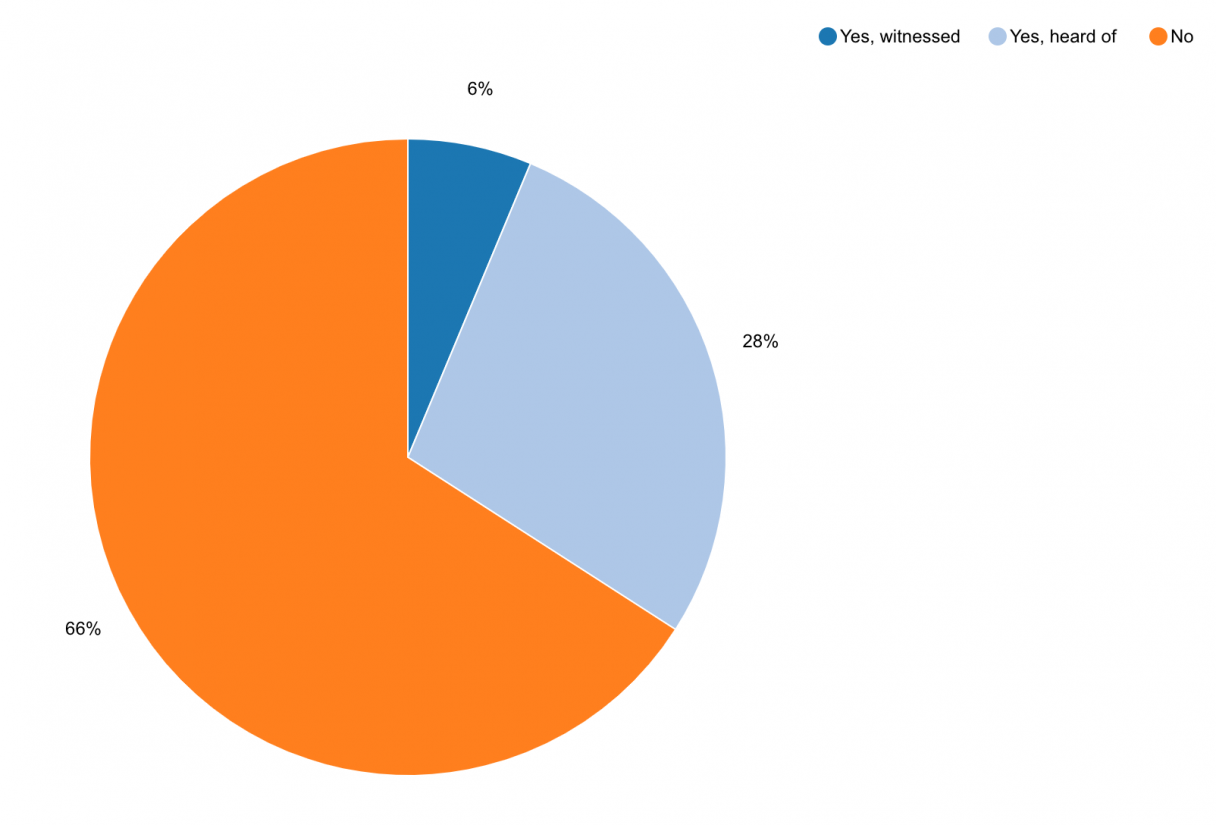
Have you witnessed spousal or family influence preventing women from attending rallies or participating in the electoral process?
66% of observers reported that they had not heard or witnessed family influence preventing women from participating in rallies or the election; of those that did report it, most received the reports from credible third parties.
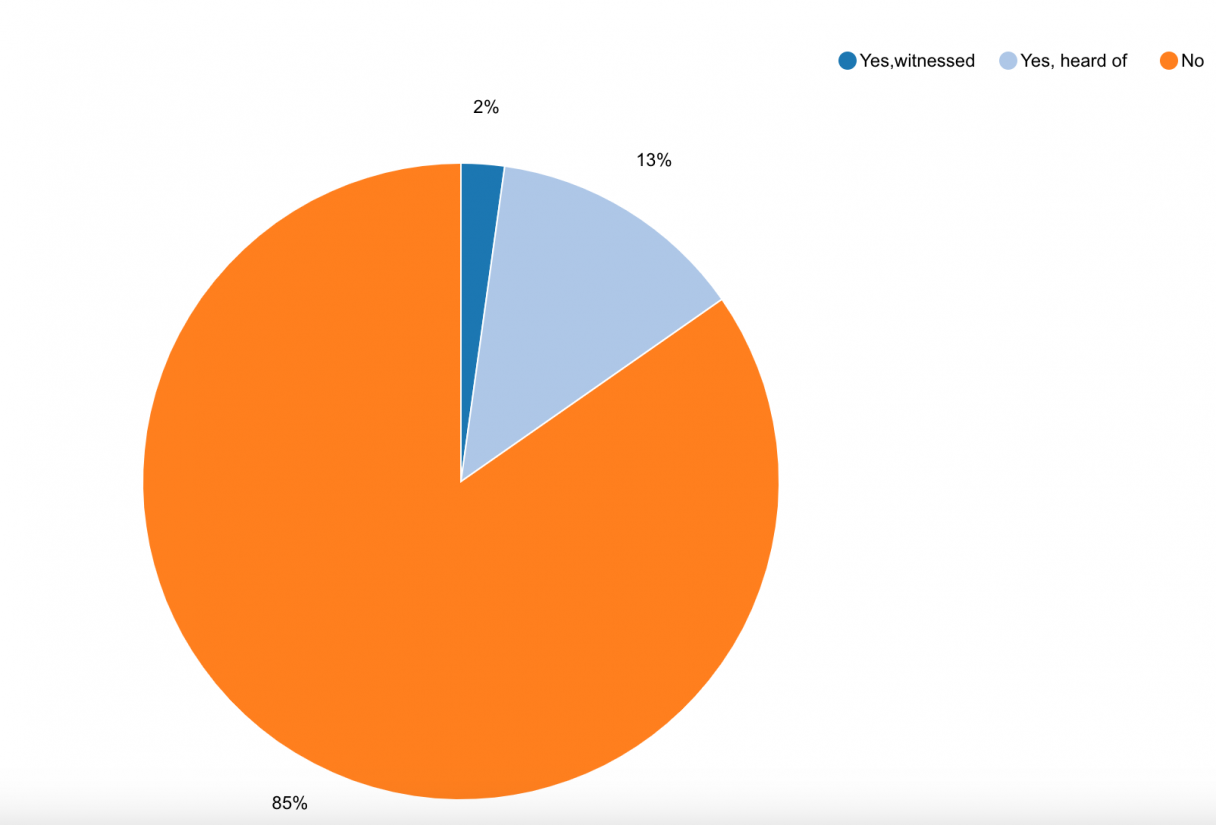
Have you witnessed or heard of attacks against women candidates or their supporters?
85% of observers reported that they did not witness or hear of attacks on women candidates or their supporters; of those that did witness or hear of such attacks, most reports came from credible third parties.
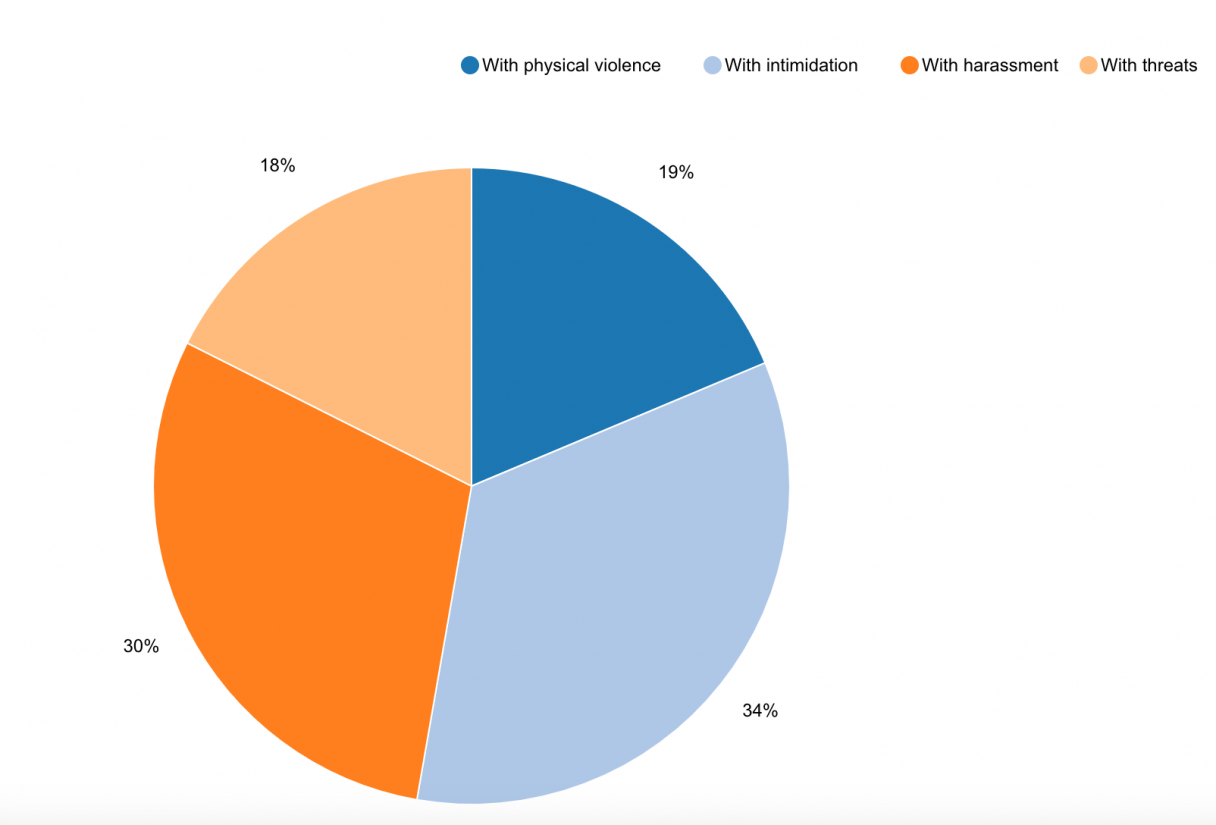
How were women candidates or their supporters attacked?
While few incidents of violence were observed, most violent attacks on women candidates or their supporters were with intimidation (34%) or harassment (30%).
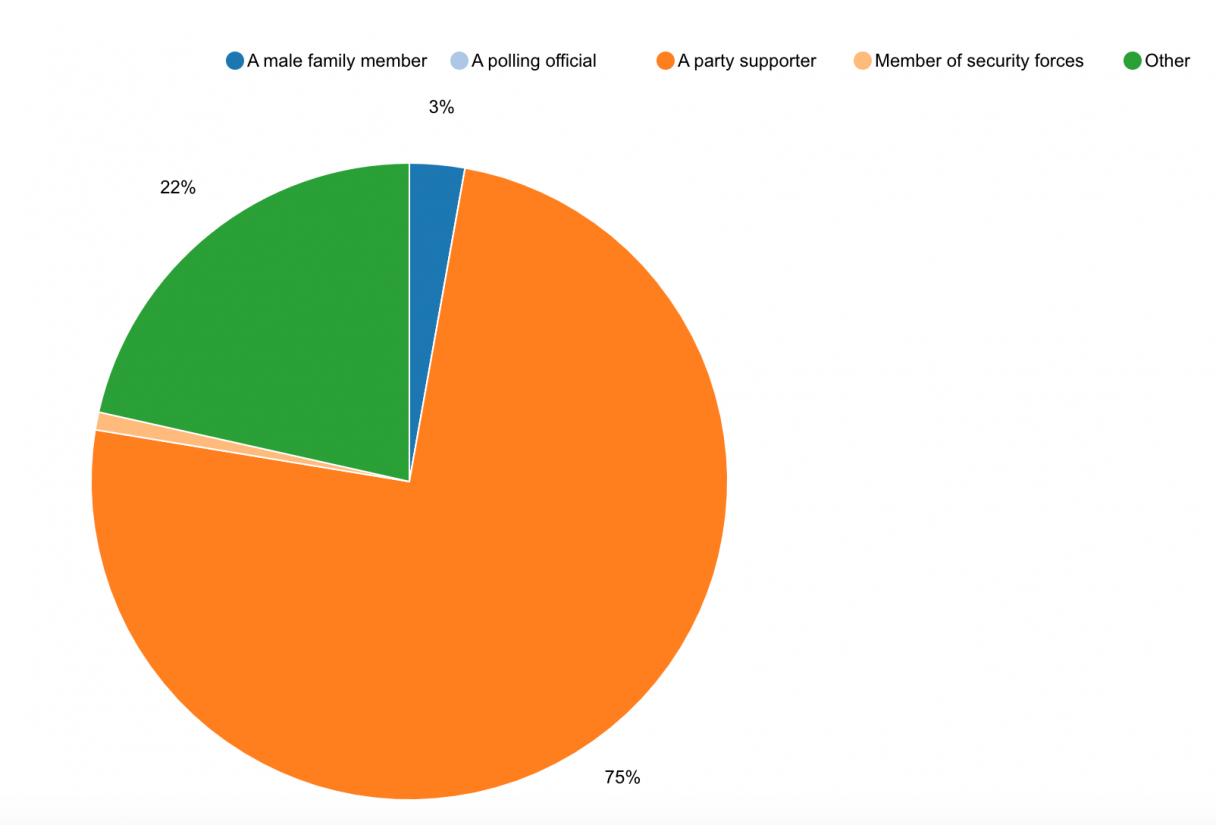
Who were the perpetrators of violence against women candidates and their supporters?
Perpetrators of violence against women candidates or their supporters were overwhelmingly party supporters, with 75% of reports of violence indicating that party supporters were the perpetrators of incidents.
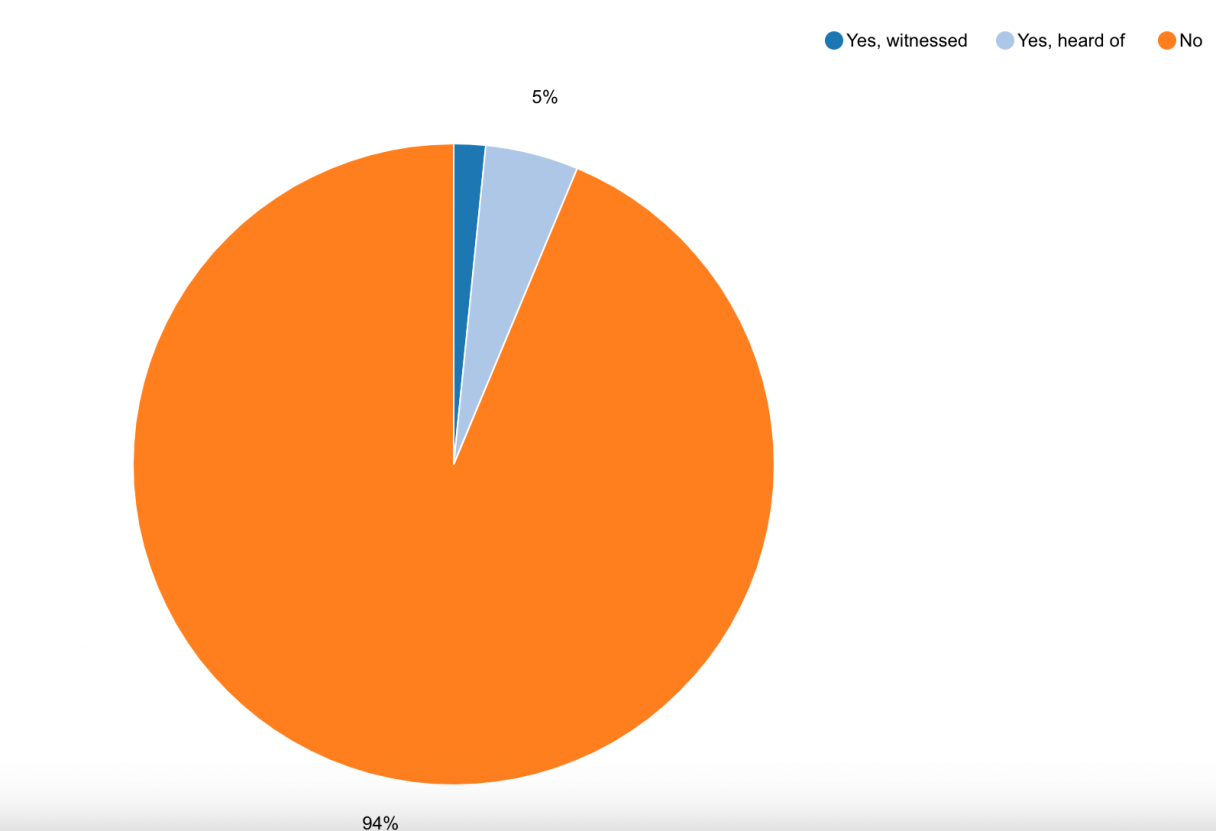
Have you witnessed or heard of vandalism or the destruction of property belonging to a women candidate or her supporters?
94% of observers reported that they did not hear of or witness any property destruction targeting women candidates or their supporters.
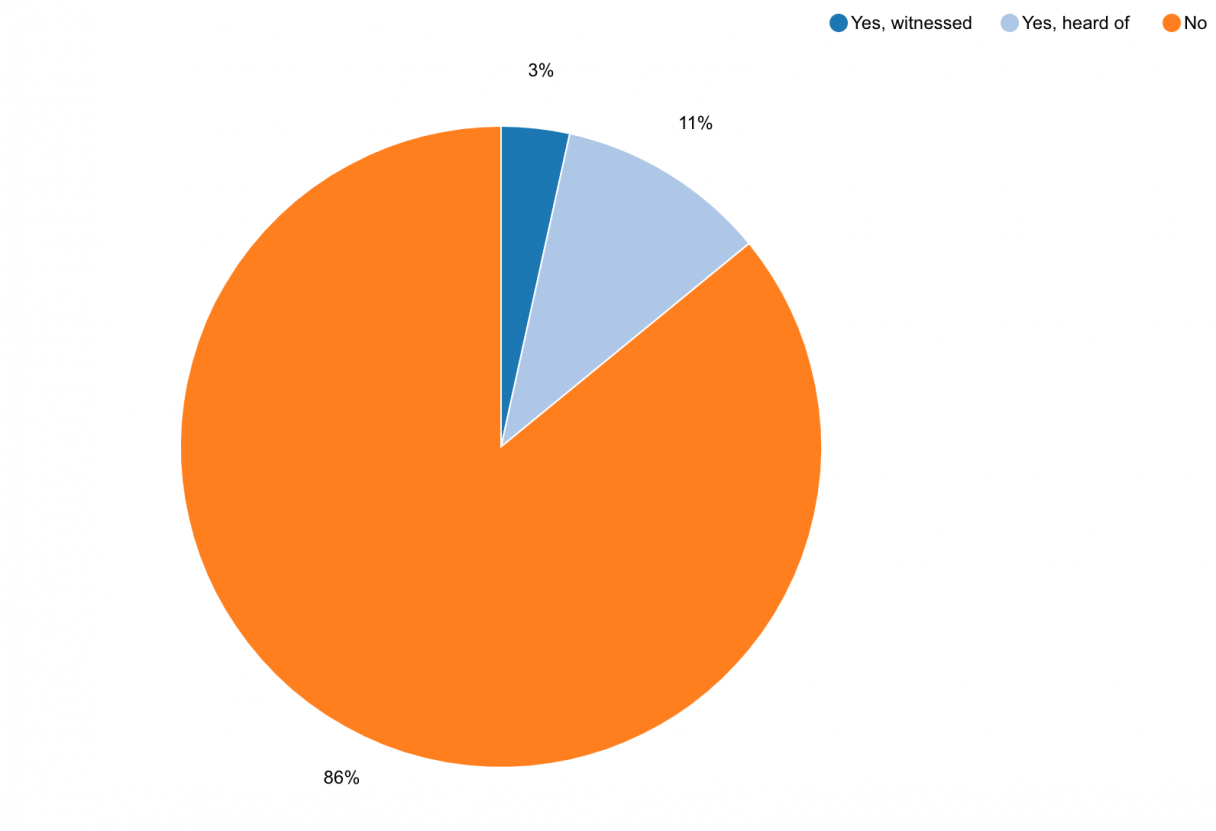
Have you witnessed or heard of any candidate encouraging his/her supporters to commit acts of violence against women?
86% of TWCP’s observers reported that they had neither witnessed nor heard of any candidate encouraging his/her supporters to commit acts of violence against women.
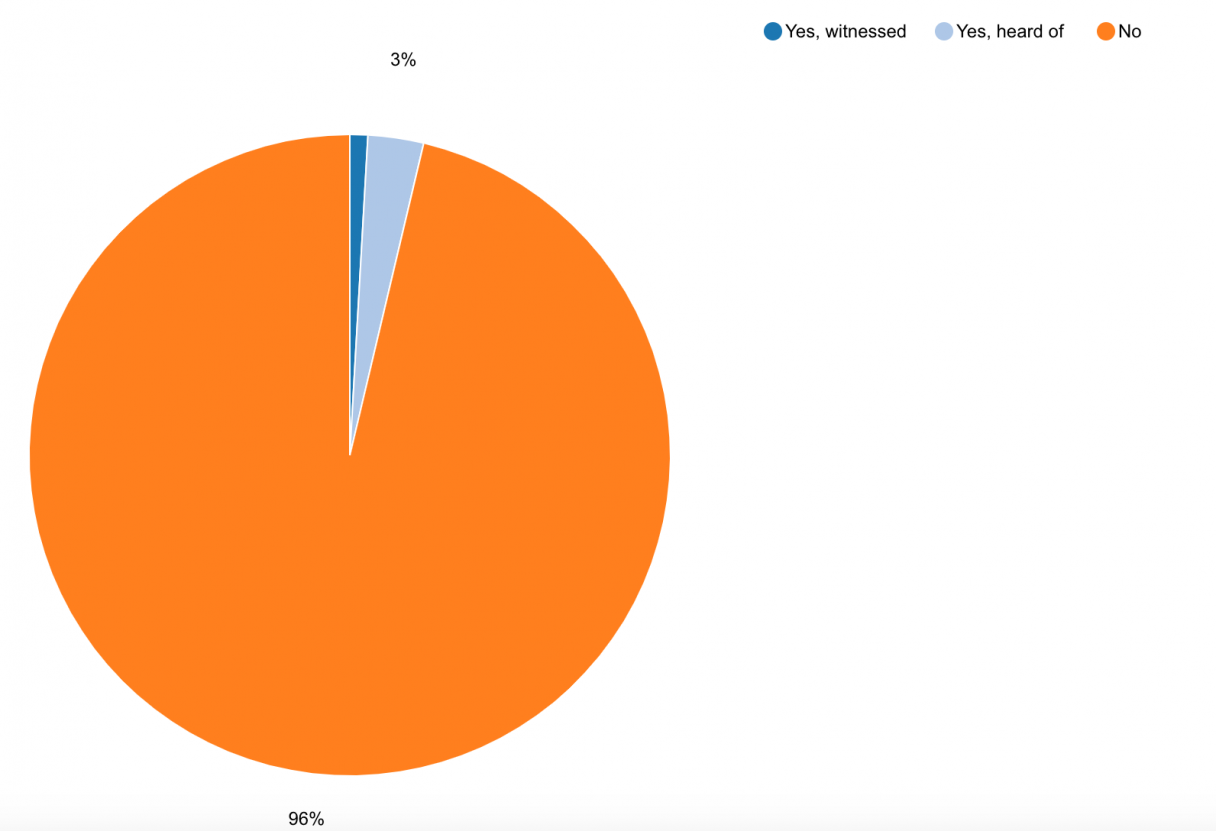
Have you witnessed or heard of attacks on women election officials?
Most observers reported that they observed or witnessed no attacks on women election officials, with 96% reporting no violence.
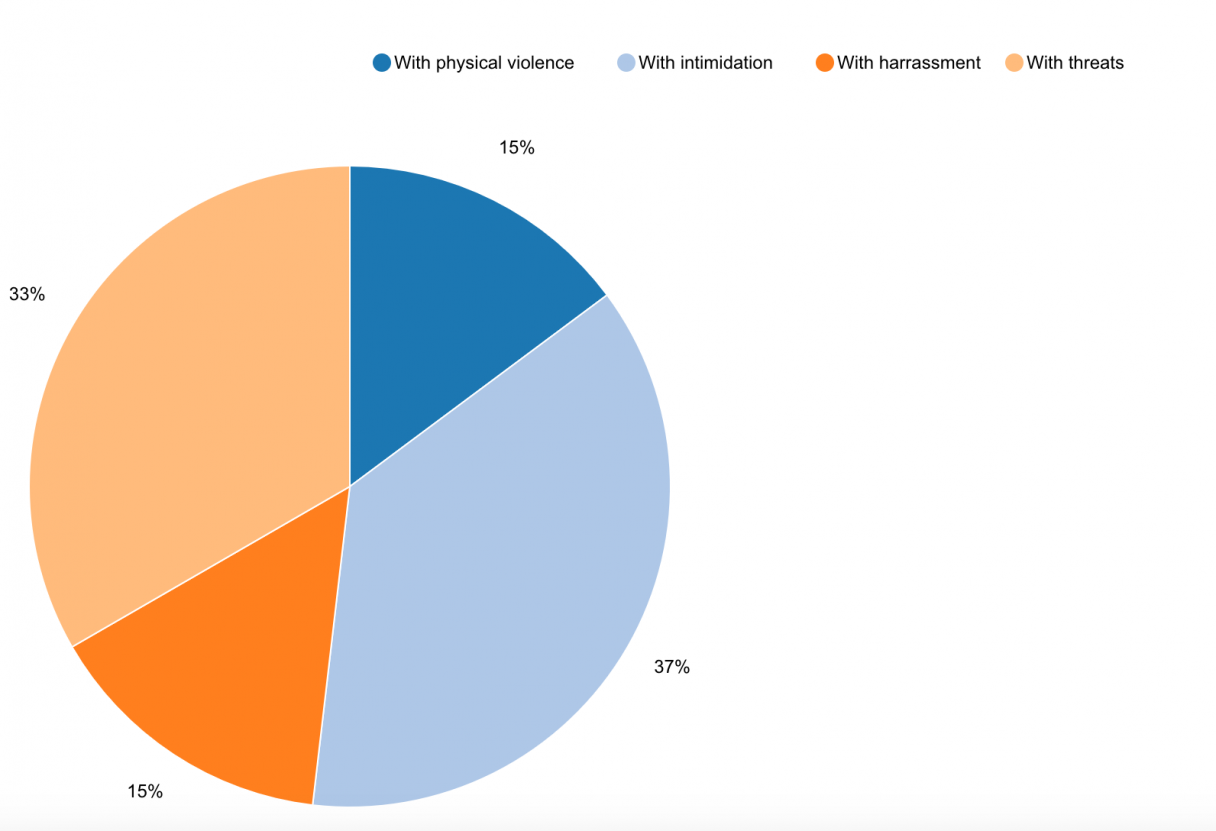
How were women election officials attacked?
In most cases, where observers reported incidents of violence, women election officials were primarily targeted by intimidation (37%) and threats (33%).
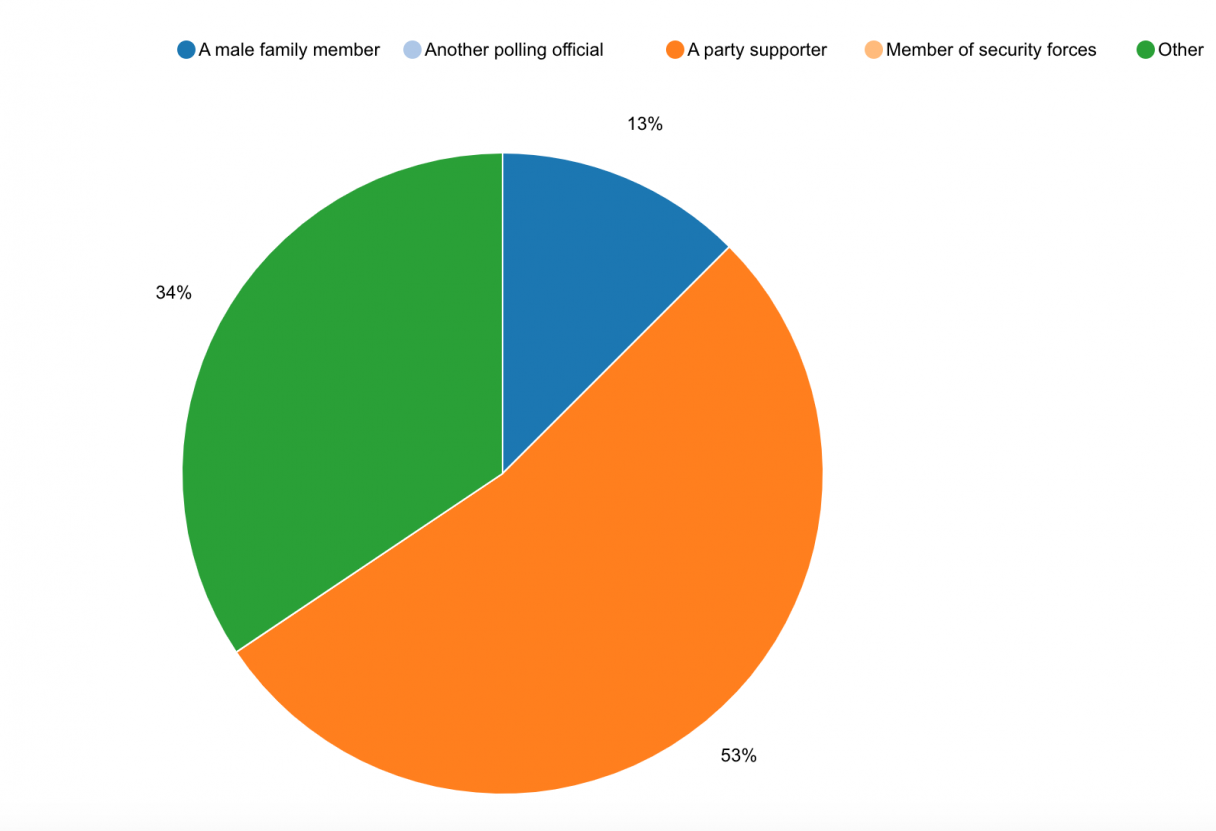
Who were the perpetrators of violence against women elected officials?
As with violence against women candidates, most perpetrators were party supporters.
ELECTION DAY
On election day, TWCP deployed the same 44 observers who had been part of the pre-election observation throughout the country. These observers reported on the day of elections about any incidents of violence targeting women that they had seen or heard of from credible third parties.
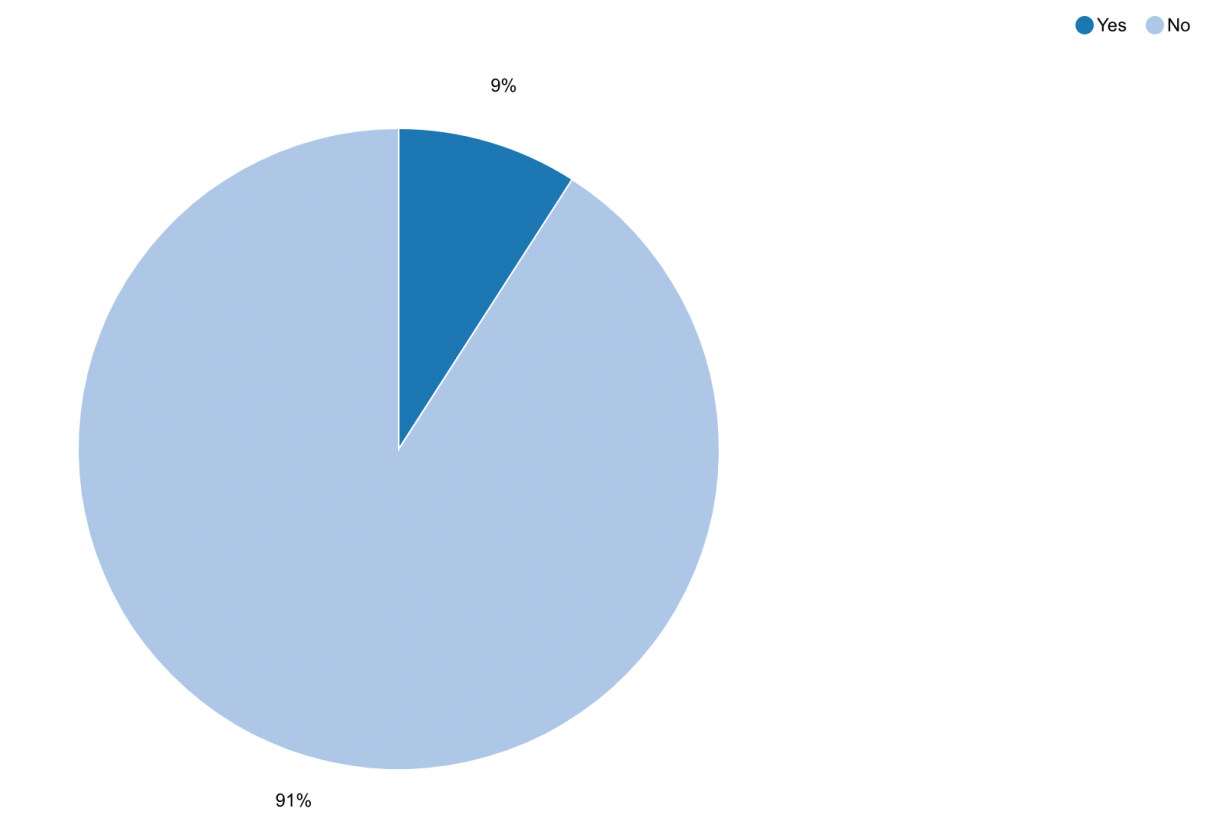
Were there incidents of violence directed at women voters as they entered or exited the polling station?
91% of observers reported that they witnessed no violence directed at women who were entering or exiting the polling stations.
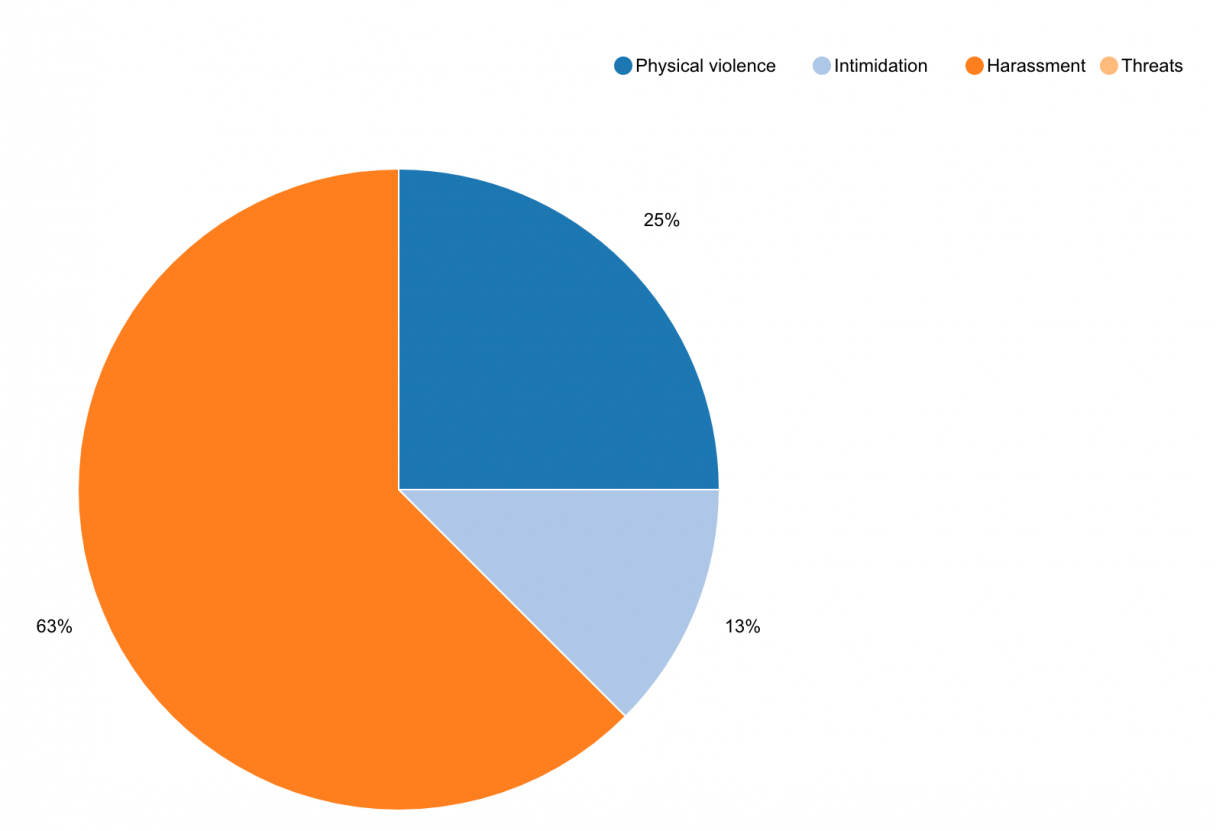
How many incidents of violence occurred as women voters entered or exited the polling station?
Of the reported incidents of violence against women voters entering or exiting the polling stations that were received, 63% were acts of harassment; the next most frequent type of violence observed was physical violence (25%).
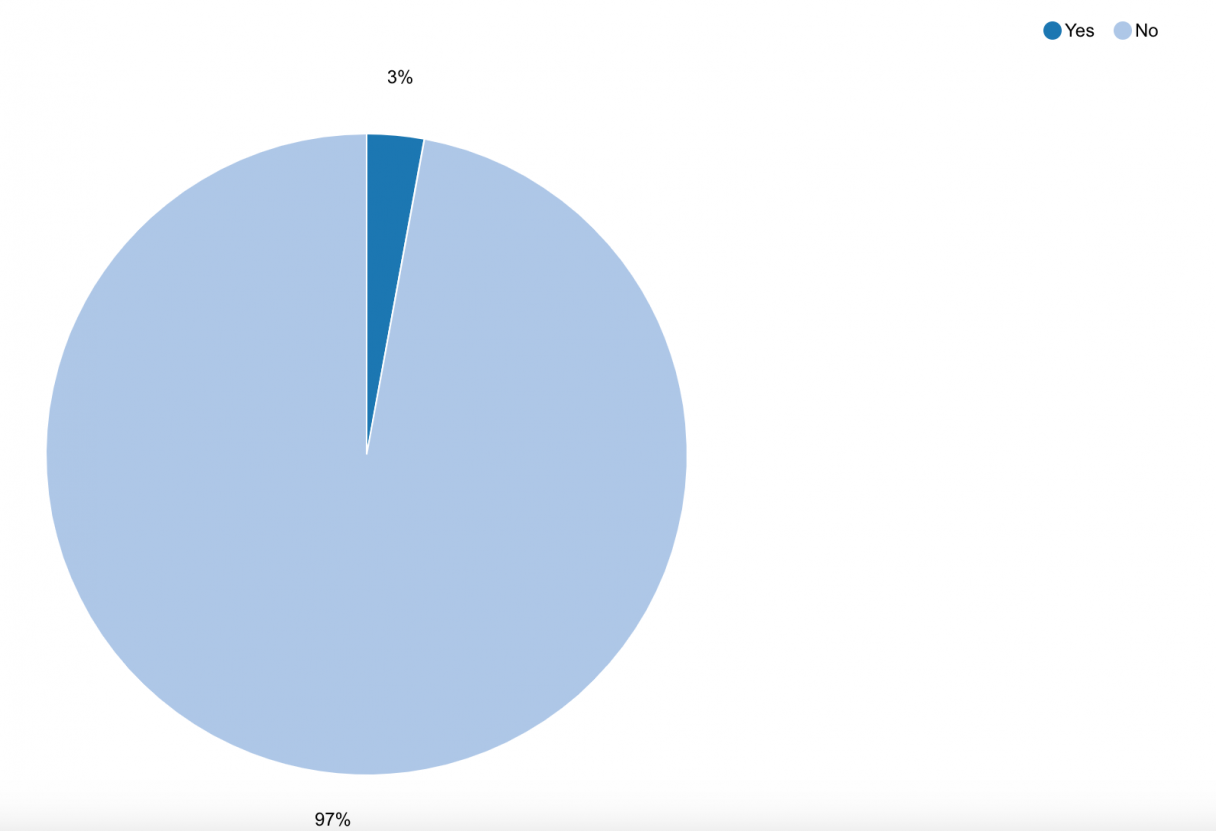
Were there incidents of violence against women poll officials during the counting of ballot papers?
In the observation of the vote counting process, only 3% of observers reported that there had been incidents of violence against women poll workers.
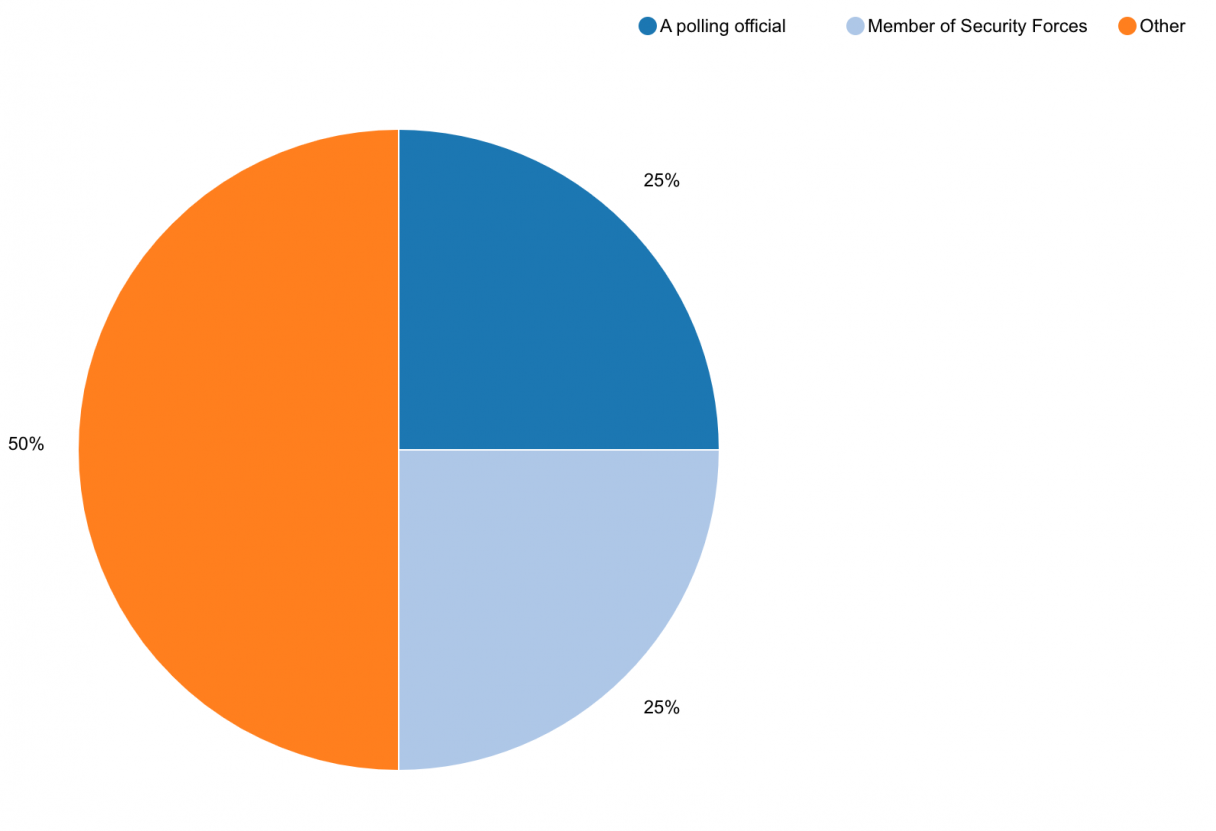
Who was the perpetrator of VAW-E at polling stations?
Of the incidents of violence against women that were observed at polling stations, 50% of the perpetrators were recorded as being other than polling officials or members of security forces.
ABOUT THE OBSERVATION
TWCP worked with NDI to train and deploy 44 observers across mainland Tanzania and Zanzibar to observer the pre-election campaign period and election day. During the pre-election campaign period, October 20-24, TWCP observers submitted a total of 320 reports; on election day itself, 44 reports were submitted.
Other countries
The Votes Without Violence project, initially developed by the National Democratic Institute, has examined violence against women in elections in the following countries. You can view each country's data individually or check out our cross-country analysis.
Burma
Cote D'Ivoire
Contested claims of victory during Côte d’Ivoire’s 2010 presidential election—the first in a decade—triggered widespread post-election violence, in which women were often the first victims.